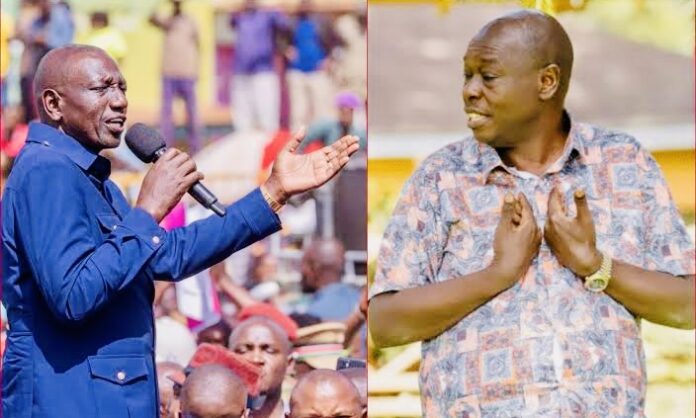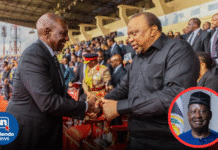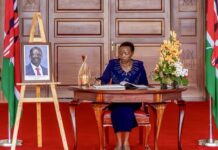President William Ruto and his former deputy, Rigathi Gachagua, are embroiled in an increasingly bitter war of words over responsibility for recent unrest and violence during the Saba Saba protests.
The fallout now exposes deep fractures within the ruling coalition, even as Kenya contends with an unprecedented wave of youth-led dissent.
President Ruto on Tuesday dismissed allegations that the government orchestrated attacks targeting businesses owned by a particular community as “nonsense,” accusing unnamed leaders of politicizing tragedy instead of helping to restore calm.
“If that person is man enough, they should tell us who was involved. Go and write a statement, don’t just speak nonsense,” said Ruto, in response to claims that the violence was ethnically targeted and state-sponsored.
He insisted that leaders who possess credible information on those behind looting and arson in Kiambu, Meru, Kirinyaga, and Murang’a should provide it to law enforcement rather than use public platforms to inflame tensions.
However, former Deputy President Rigathi Gachagua hit back with a fiery statement, accusing Ruto of directing the same police officers to facilitate violence under the guise of security operations.
“You are asking us to name those who organised? I named you as the person responsible for unleashing violence against the community that made you President,” Gachagua said. “You even directed police to shoot innocent Kenyans in the legs. And you couldn’t send condolences to the dead.”
As the political titans exchange blame, Interior Cabinet Secretary Kipchumba Murkomen has added fuel to the fire, branding the Saba Saba demonstrations a “coup attempt” led by “criminal anarchists.”
The government’s hardline stance, however, is colliding with a new and unrelenting political force: Generation Z.
Unlike past protest movements driven by political parties, the current wave has been powered by young, leaderless Kenyans mobilizing organically on social media platforms like X, TikTok, and Instagram. With up to 800,000 new entrants into the job market each year and limited opportunities, this highly educated but underemployed demographic is driven by frustration, not party loyalty.
Gen Z, a product of Kenya’s free education policies introduced in the early 2000s, is fearless, digitally connected, and politically unorthodox. Most have no memory of Kenya’s authoritarian era or the struggle for multiparty democracy, and they are increasingly unwilling to wait for change through conventional political channels.
According to a report by Afrobarometer, Kenya’s youth are more educated than previous generations but face the highest rates of joblessness. Their recent show of strength has jolted the political establishment and reframed the debate over protest rights, police response, and national unity.
With Ruto’s administration caught between rising youth unrest and internal political rifts, the next steps — both in policy and rhetoric — may shape not just the legacy of this presidency, but the direction of Kenya’s political future.



















